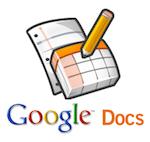Google Earth allows for viewing of maps and roads (similar to GoogleMaps), but it has many more advanced features that allow for planning and staging the development of buildings, roads, trees, bodies of water, as well as integrated satellite imagery enabling relative heights, weather information, building information, and more.
I use Google Earth in my REC 400/500: Planning for Park & Recreation Facilities course when students work as a team of recreation professionals on a planning project for the Director of Recreation at La Crosse Parks and Recreation. There are multiple steps in the project, the first of which is Site Inventory & Analysis. Google Earth is one of the first tools used at this stage since students can get both a broad overview of their site in the context of the region and the national, state, local, or neighborhood level to determine what other recreation related services and facilities are currently provided. They can then begin to examine their site, usually a park facility, and explore the various layers of information provided through Google Earth, e.g. roads, buildings, but also weather information. The plotting ability results in a better understanding of historical weather conditions which greatly influence the site development, i.e. we need to consider protection from the predominant harsh weather patterns while taking advantage of the predominant pleasant weather conditions.
Once moving past the information gathering stages, the students then use Google Earth to develop a base map which adds to in terms of proposals to their sites. Using these maps, for which basic information can be downloaded, students are able to propose multiple recreation uses to scale and are able to observe and share accurate spatial relationships in order to design effective, usable, and safe recreation spaces. Students are able to turn layers of information on and off, can move through spaces either from a bird’s eye view or as if they were walking through the space (e.g. Google’s “streetview”) which has added yet another dimension of data.
Much of this information would typically be available through more sophisticated GIS-based software such as ARC-GIS, but Google Earth’s advantage is that it’s free, it’s accessible, and it’s relatively easy for students to use effectively without spending our limited semester time on learning to use the software. In this way, we are able to address the course learning outcomes specific to learning best recreation facility planning practices without spending valuable time on just learning to use the tools available for planning.
The addition of Google Earth to this assignment does not substitute for the site visit, but rather greatly enhances the site visit. Students come to the site visit more prepared and inquisitive than in the past.

For those interested in integrating Google Earth into an assignment, I highly recommend becoming aware of the strengths and weaknesses of the tool and running the project/assignment through a pilot test of your own. Also, be a little flexible with facets of the project that may have a relative relationship, not an absolute relationship.
For more information about Google Earth:
https://www.google.com/earth/ And the Google Earth for Educators site with more ideas for classroom uses:
http://sitescontent.google.com/google-earth-for-educators/
Submitted by Laurie Harmon, Recreation Management and Therapeutic Recreation
 The videos are short--ten, fifteen minutes--and students report enjoying the chance to see me in my element and get to know me as an instructor. In my evaluations, students regularly commented on the videos as one of the activities they found most engaging and helpful in the online course. It also helps to humanize the process of online teaching--and connecting with students personally is extremely
The videos are short--ten, fifteen minutes--and students report enjoying the chance to see me in my element and get to know me as an instructor. In my evaluations, students regularly commented on the videos as one of the activities they found most engaging and helpful in the online course. It also helps to humanize the process of online teaching--and connecting with students personally is extremely 


































